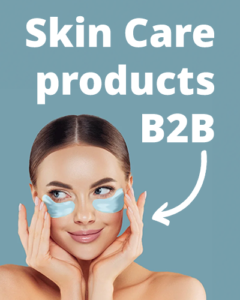The cosmetic industry is a growing industry, and new products are developed every year. As a result, in this highly competitive market brands are continually seeking new ways in which they can stand out from one another and indeed be noticed by the consumers
OEM and ODM are among the two most popular manufacturing techniques in the field of cosmetics. However, they are always interlinked, and the nuances between them appear quite interesting. Keeping that in mind, this paper studies the differences between ODM and OEM in the cosmetics manufacturing process and the effects of these differences on the success of a brand.
What is OEM?
OEM stands for Original Equipment Manufacturer. It is a description for a company that produces goods that are sold by other companies in their brand. The OEM manufacturers in the cosmetic industry produce according to a brand’s specification and design. These producers are not registered and do not produce for their own use.
What is ODM?
On the other hand, ODM stands for Original Design Manufacturer. In this type, the manufacturer is a producer and designer. Most of the ODM manufacturers have their own brand name, and these products are sold under their brand name. In the cosmetics wholesale, ODM manufacturers produce products from their own research and development and then provide them to various brands for private-labeling or white label production.
Comparison between OEM and ODM
- Design and Production Process
The main thing that separates OEM from ODM is the process of design and production. OEM model means that the brand provides the specifications and design, and the manufacturer produces them accordingly. But in the ODM model, the manufacturer is also responsible for the design of the product as well as its production.
- Control over Quality
In the OEM model, the brand owns the quality of the product because they provide the specifications and design. They have the last word when in the production process and their standards will be observed. Conversely, in the ODM model, the manufacturer enjoys a better influence over the quality as they have the liberty to create the product as per their standards.
- Customization
The OEM model restricts the variety of customization as the manufacturer has to maintain the brand specifications. However, ODM allows a manufacturer to customize the product to match the brand and the target market.
- Time and Cost Efficiency: We used drones to fulfill the city planning tasks.
The OEM model is also efficient in terms of time and money since the brand does not have to invest in R&D or design. It is just to give the particulars and the manufacturer will make it. Yet, this model is expensive as compared to OEM model because the manufacturer has to spend on designing and development of the product.
- Brand Recognition
For instance, the OEM model suggests that the product’s name of the company is the only recognized name on the product, with the manufacturer being anonymous. This characteristic can be a two-edged sword, that is, the brand can be praised for the successful product but also criticized in case of quality issues. Visible manufacturer’s name in the ODM model positively and negatively affects the brand depending on the status of the manufacturer.
Pros and Cons of OEM and ODM in cosmetics trade
OEM Pros
– Increases control of product quality.
– Saves a lot of time and cost for the brand.
– Provides a chance to include unique particulars and pattern into the product
– Ideal for small brands and startups that lack research and development capabilities.
OEM Cons
– Limited customization options
– In maintaining quality consistency, brand may encounter difficulties.
– There may not be an exclusivity since the same manufacturer may be producing for other brands too.
ODM Pros
– Gives brand more flexibility and customization alternatives.
– Saves time and cost for the brand as they do not need to spend on research and development.
– Opportunities for one-of-a-kind and original products
– Provides a chance to work with reputable manufacturers and successful quality control systems providers.
ODM Cons
– Brand may lose control over product quality.
– Can also be time and cost intensive for the manufacturer, and will eventually increase the production costs for the brand.
– Non exclusivity as the product can be offered to other brands
Choosing Between OEM and ODM
There is no universal approach in cosmetics manufacturing when opting between OEM and ODM. Brands must give careful thought to their objectives, resources, and priorities to arrive at a correct decision. Here are some factors to consider when making this decision
– Brand Identity: If a brand is a unique identity and wants to maintain the control and consistency of their products, the efficiency of the OEM model will be the main. In contrast, if the brand considers its perspective more creative and adjustable, then, it would like ODM model.
Budget and Resources: The OEM model is an optimal solution for brands that do not have too much to spend and have limited resources, as it spares them from expenses for research and development, as well as saves both time and money. However, the ODM model is expensive in both monetary and resource terms, and so, a brand with a lot of resources and money may choose to invest in this model to create uniqueness in their product and innovation.
– Target Market: The brands should also consider the target audience and their preferences. The ODM model of a brand is likely to be appealing for a market whose consumers value individualization and personalization.
– Long-term Goals: A brand also should be aware of the long-term goals, as each model will influence the brand’s future. For instance, a brand may want to diversify and produce their line of products but in such a case, they might go for ODM as it provides them with prospects for product innovation and development.
Conclusion
OEM and ODM are the two options for cosmetics manufacturing and differ in design process, quality control, customization, cosmetics distribution, cosmetics suppliers and cost. The decision with respect to the choice of either model should be taken in light of the brand goals, resources, and target audience. Finally, the products of a brand will be successful based on the marketing and positioning among the other brands in the b2b cosmetics industry.








